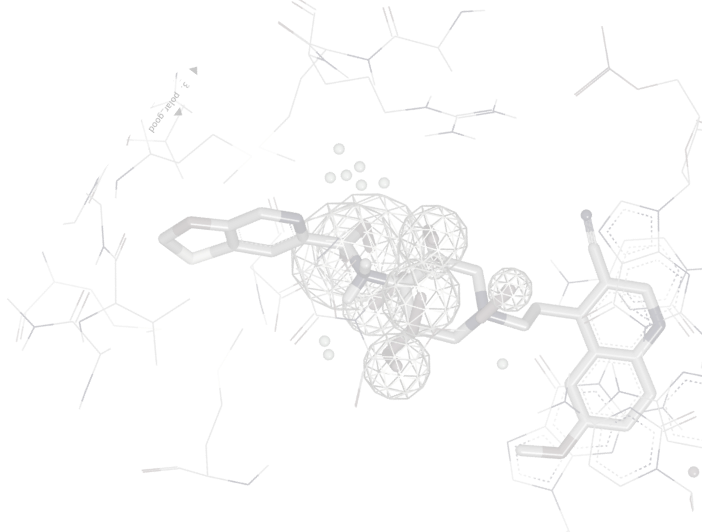
Zap TK
Zap TK produces Poisson-Boltzmann electrostatic potentials [1] and, from them, biologically interesting properties including solvent transfer energies, binding energies, pKa shifts, solvent forces, electrostatic descriptors, surface potentials and effective dielectric constants. Zap TK works well for small molecules, proteins and macromolecular ensembles [2]. Unique to Zap TK is a dielectric function based on atom-centered Gaussians [3], which avoids the pitfalls of discrete dielectric constants.
In a study of LCK kinase inhibitors, Zap TK was used to analyze the ligands solvent-exposed portions, simultaneously optimizing the solubility and binding affinity. In another study, Zap TK was used for high-throughput MM-PBSA calculations of relative binding free energies [4].
For more detailed information on Zap TK, check out the link below:
Documentation.jpg?width=623&height=381&name=OE_toolkits_2022_updated_w_SiteHopper%20v2-1%20(1).jpg)
Modeling
The Modeling suite of toolkits provides the core functionality underlying OpenEye's defining principle that shape & electrostatics are the two fundamental descriptors determining intermolecular interactions. Many of the toolkits in the Modeling suite are directly associated with specific OpenEye applications and can, therefore, be used to create new or extend existing functionality associated with those applications.
- OEChem TK Core chemistry handling and representation as well as molecule file I/O
- FastROCS™ TK Real-time shape similarity for virtual screening, lead hopping & shape clustering
- OEDocking TK Molecular docking and scoring
- Omega TK Conformer generation
- Shape TK 3D shape description, optimization, and overlap
- SiteHopper TK Rapid Comparison of Protein Binding Sites
- Spicoli TK Surface generation, manipulation, and interrogation
- Spruce TK Protein preparation and modeling
- Szybki TK General purpose optimization with MMFF94
- Szmap TK Understanding water interactions in a binding site
- Zap TK Calculate Poisson-Boltzmann electrostatic potentials
Cheminformatics
The Cheminformatics suite of toolkits provides the core foundation upon which all the OpenEye applications and remaining toolkits are built.
- OEChem TK Core chemistry handling and representation as well as molecule file I/O
- OEDepict TK 2D Molecule rendering and depiction
- Grapheme™ TK Advanced molecule rendering and report generation
- GraphSim TK 2D molecular similarity (e.g. fingerprints)
- Lexichem TK name-to-structure, structure-to-name, foreign language translation
- MolProp TK Molecular property calculation and filtering
- Quacpac TK Tautomer enumeration and charge assignment
- MedChem TK Matched molecular pair analysis, fragmentation utilities, and molecular complexity metrics
References
- The effect of a variable dielectric coefficient and finite ion size on Poisson-Boltzmann calculations of DNA-electrolyte systems Gilson, M.K., Rashin, A., Fine, R., Honig, B., J. Mol. Biol., 1985, 184, 503.
- Protonation state of Asp30 exerts crucial influence over surface loop rearrangements responsible for NO release in nitrophorin 4 Menyhard, D.K., and Keseru, G.M., FEBS Lett.,2005, 579, 5392.
- A Smooth Permittivity Function for Poisson-Boltzmann Solvation Methods Grant, J.A., Pickup, B., and Nicholls, A., J. Comp. Chem., 2001, 22, 608.
- High-Throughput Calculation of Protein-Ligand Binding Affinities: Modification and Adaptation of the MM-PBSA Protocol to Enterprise Grid Computing Brown, S. P., and Muchmore, S. W., J. Chem. Inf. Model, 2006,46, 999.
RESOURCES
